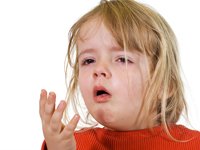You’re not feeling your best. You have a runny nose, slight fever, some congestion, and a cough. Chances are, you believe you’ve come down with a cold. Would it occur to you that it might instead be whooping cough? Most likely not, unless you’re a resident of Washington (state) and know others who were infected during the current whooping cough outbreak taking place.
That’s right, whooping cough, otherwise known as pertussis, has reached epidemic proportions in Washington (state).1 There have been more than 1,100 cases recorded between January and early May. No deaths have been attributed to the disease, but 20 babies required hospitalization because their infections were severe. Whooping cough gets its name from the choking, long-lasting cough that often accompanies the illness. It is particularly dangerous for children younger than a year old, and more than half of infants who develop whooping cough need to be admitted to a hospital for treatment.2
Cases of whooping cough come up every year, but rarely in the numbers being seen in the Washington state whooping cough outbreak. In an average year, between 500 and 600 cases might be documented across the state. In contrast, 2012 is shaping up to be a record breaker, with 100 to 125 new cases typically appearing weekly. This could mean a total somewhere in the range of 3,000 cases of whooping cough in Washington over the course of the year. That would by far be the most in the state since the 1940s, when vaccinations against whooping cough began.
It might be easy for some people to jump to the conclusion that Washington is facing this health dilemma because it is relatively permissive about exempting school-age children from the whooping cough vaccine. At first glance, immunizations would appear to have lowered rates of whooping cough across the United States since the late 1950s. But that is hardly representative of the whole picture.
Yes, the frequency of whooping cough has decreased by 90 percent in the 70 years or so since the development of the whooping cough vaccine, but the illness has been back on the rise fairly steadily since 1990.3 This is not the first major outbreak the U.S. has experienced recently. In 2010, California had a massive epidemic that totaled more than 9,000 cases, with a toll of 10 deaths among infants.
There are a combination of likely factors influencing this trend. Older vaccines and vaccinations are no longer as effective since the bacteria has slowly mutated and developed new strains. According to the Centers for Disease Control, a 2009 study of the pertussis virus in the Netherlands showed that variations in the virus have produced a higher level of pertussis toxin (Ptx), and that this has led to the resurgence of the disease. What this means is that the virus strains have become both more infectious and more toxic, compromising the efficacy of the vaccine and making the disease more contagious.
Vaccines also don’t last forever and our immunity to the disease lessens over time, leaving many of us vulnerable as adolescents and adults. Since whooping cough isn’t really on the radar for most of us, we don’t rush out to get medical care at the first sign of illness. And testing for whooping cough, for which the results may take weeks to obtain, is often unreliable unless it is done in the initial stages of the infection. In other words, it’s an infection built to travel from one person to the next.
And then there’s the issue of unvaccinated children, which the health authorities like to blame for the recent outbreaks. And yes, while parents have the right to choose whether or not to proceed with vaccinating their children or not with any routine immunizations, whooping cough vaccination has not decreased as much as some of the others. While it is not without serious potential side effects, the vaccine for whooping cough is not considered a potential cause of autism, which is the standard by which some parents determine what immunizations to skip.4 The bottom line is that infection is appearing in both children who have not been vaccinated against whooping cough AND children who have been. The bottom line is that you can’t blame the rise in pertussis on unvaccinated children.
In any case, if you decide not to vaccinate against whooping cough and an outbreak comes to your neighborhood, or if you vaccinated and it didn’t work, how can you protect yourself and your loved ones? Avoid anyone actively sick, especially those who are coughing or sneezing as that is how the bacteria transfer from person to person. And taking immune boosters and pathogen destroyers will also help you fight off infection or reduce its severity if you do catch a case of whooping cough.
1 Myers, Laura. “Washington state facing major whooping cough epidemic.” MSNBC. 4 May 2012. Accessed 9 May 2012. <http://www.msnbc.msn.com/id/47296917/ns/health-childrens_health/#.T6yMJBxxFsh>.
2 “Pertussis (Whooping Cough) Complications.” Centers for Disease Control and Prevention. 26 August 2010. Accessed 9 May 2012. <http://www.cdc.gov/pertussis/about/complications.html>.
3 “Whooping Cough.” Canada.com. Accessed 9 May 2012. <http://bodyandhealth.canada.com/channel_condition_info_details.asp?disease_id=217&channel_id=1020&relation_id=70907>.
4 Landau, Elizabeth. “Vaccination role unclear in whooping cough outbreak.” CNN. 28 June 2010. Accessed 9 May 2012. <http://articles.cnn.com/2010-06-28/health/california.whooping.cough_1_whooping-cough-pertussis-vaccines-and-autism?_s=PM:HEALTH>.











